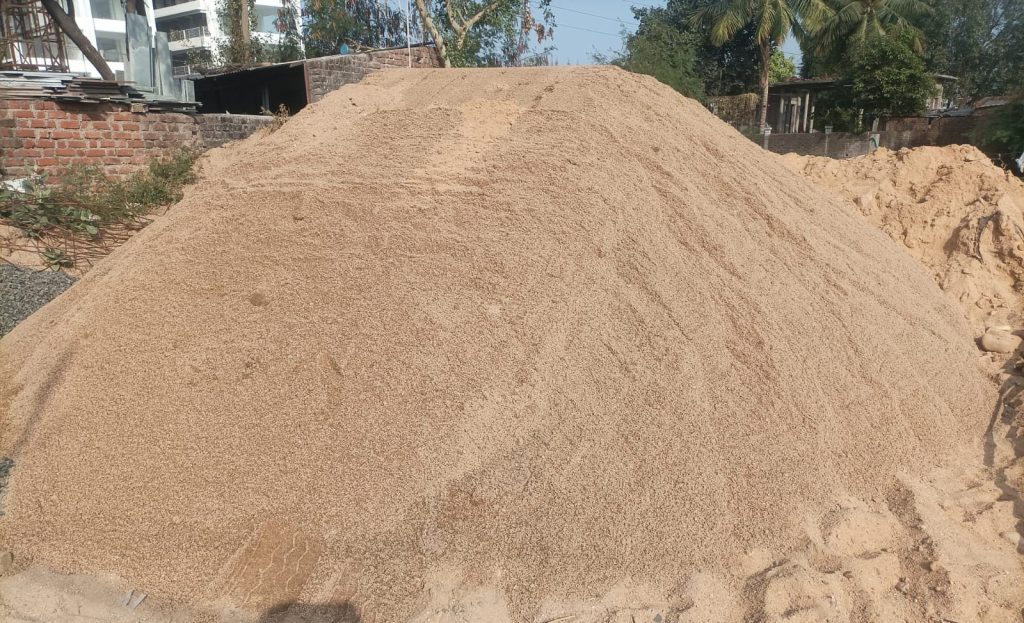Building projects require a variety of natural and raw substances, such as wood products, limestone, building sand, clay and metals. Mining and production of these substances can have a significant impact on biodiversity.
Bamboo grows up to 1 meter per day it is an eco-friendly material for floors as well as ceilings. Cork also a renewable substance that is used for the acoustic ceiling or wall panels instead of being burned and recycled into landfills.

Sustainability in Construction:
The principles of sustainable construction provide the framework to in the planning and implementation of any undertaking in order to protect its environment. They include building materials with less energy embodied and including biodegradable and recycled elements in the architecture of the building along with adopting environmentally sustainable construction practices.
Bamboo, wood hemp cement, cork are some examples of green construction materials. They’re renewable and regenerated by themselves. These are sustainable and need little or no chemical treatment. They are also used to create insulation as well as regulate humidity.
Green construction can be facilitated by the use of materials with lower embodied energy and by adopting environmentally-friendly production processes, such as direct reduced iron for steel or carbon capture for cement. The same can be facilitated by implementing a sound acquisition strategy where the selection of suppliers is based on sustainable criteria and the benchmarks. It is crucial to establish targets on the quantity of recycled or repurposed materials that will be used in the construction process.
Environmentally friendly Building Materials
Building materials that are eco-friendly focus on using renewable, natural or recycled products that reduce environmental impact and use of resources and energy during construction. They are made of materials which are sourced locally and require minimal processing in order in order to minimize transportation and emissions needs. The most eco-friendly building materials are bamboo, industrial hemp straw bales, recycled glass, the reclaimed wood as well as rammed Earth.
Hemp concrete, for instance is a material for building that is made up of hemp fibers along with lime and water. It’s breathable, and it regulates humidity. It is also sturdy and robust. Carbon negative implies that it has more carbon dioxide in its production than what it releases during its usage.
Recycling steel is a different eco-friendly building material. It can be used in framing, roofing and counter tops, as well as flooring. Stone, a natural substance that occurs in the environment and requires only minimal effort, is also a commonly used building substance. The cork bark, which is extracted from cork oaks can be utilized as a natural insulation material for walls and floors.
Environmental Conservation in Construction
Many large construction firms have begun to adopt sustainable practices and use green products in the construction process. This is a great method to preserve nature’s resources and decrease environmental pollution at the construction site.
It is also important to reduce energy consumption during the building process. Utilizing renewable energy and digital technologies can help to lessen the carbon footprint your building.
The manufacturing of specific building gia xi mang materials could have a negative impact on the biodiversity. Extraction of natural materials like gravel, wood, sand and iron ore can cause habitat damage and isolation of species.
Another issue that is of great concern is the production of synthetic materials, such as concrete, that is among the most environmentally unfriendly construction material. Recycling plastic and reclaimed timber offer eco-friendly alternative options. It is a great option since it aids in curb deforestation and is easily accessible. The material is lightweight that makes it easy to carry. Also, it has strong tensile forces for long-term durability.
Green Materials: Benefits
The green materials focus on sustainability throughout their life cycle, generating less emissions in the process of production, operating and disposal over traditional material. Energy-efficient windows and insulation from natural fibers or recycled steel are great ways to reduce the energy consumption of a structure and lower your the cost of energy and reduce emissions.
Sustainable materials can be obtained from renewable rather than nonrenewable resources, avoiding forest destruction. They also take in more carbon dioxide than they emit in their time of. Biomimetic technology is used to replicate the characteristics that green products have. Mycelium, for instance, is made of thin strands that develop and transform into tough, robust substance.
Planners of projects can help increase the supply of green materials by showing a dedication to sustainability and encouraging industry ecosystems to innovate. Making sure that the supply chain is robust in assessment and quality control will help ensure the success of green materials initiatives. Continuous learning is the most effective way to increase the latest technology and saving money.
